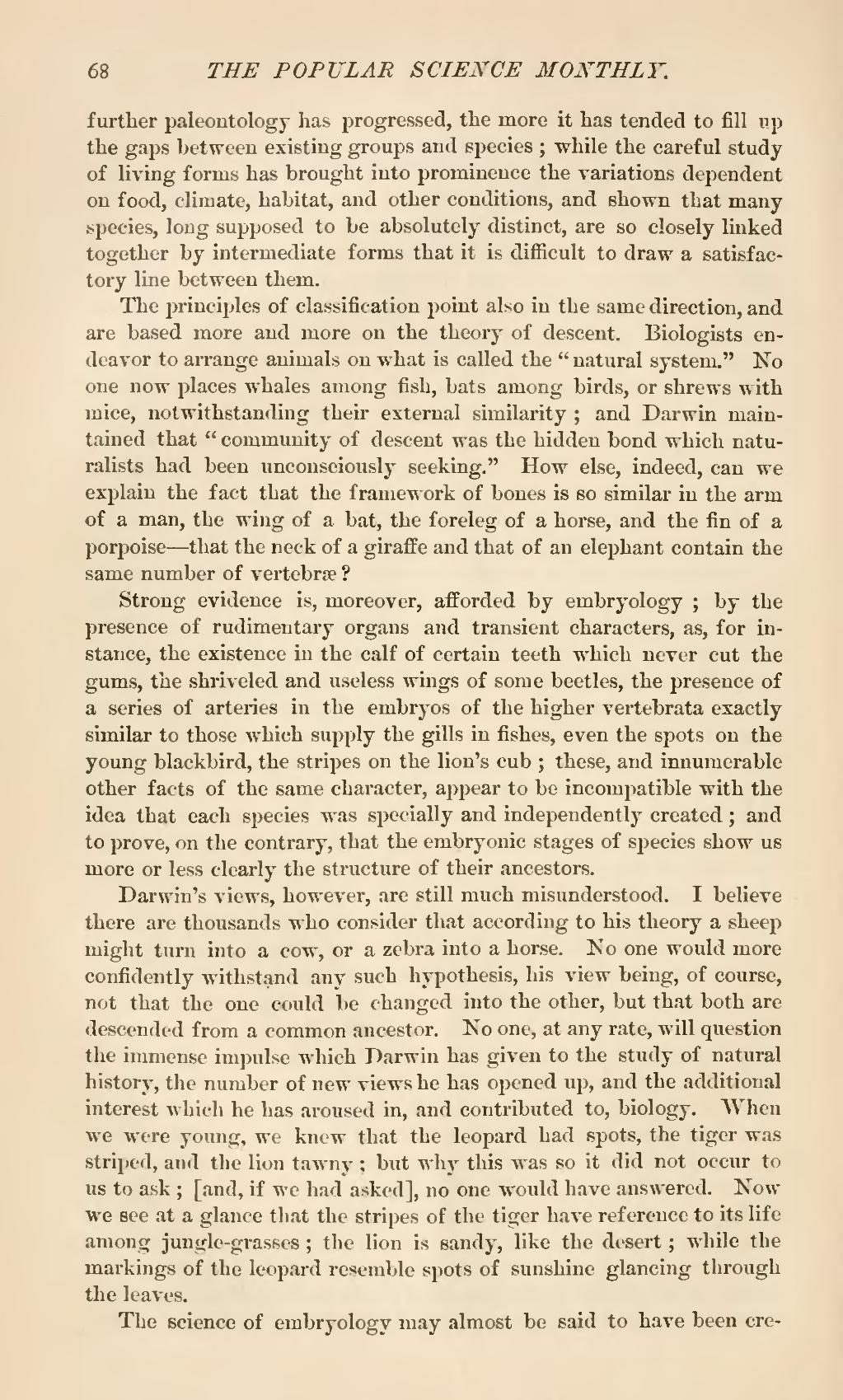further paleontology has progressed, the more it has tended to fill up the gaps between existing groups and species; while the careful study of living forms has brought into prominence the variations dependent on food, climate, habitat, and other conditions, and shown that many species, long supposed to be absolutely distinct, are so closely linked together by intermediate forms that it is difficult to draw a satisfactory line between them.
The principles of classification point also in the same direction, and are based more and more on the theory of descent. Biologists endeavor to arrange animals on what is called the "natural system." No one now places whales among fish, bats among birds, or shrews with mice, notwithstanding their external similarity; and Darwin maintained that "community of descent was the hidden bond which naturalists had been unconsciously seeking." How else, indeed, can we explain the fact that the framework of bones is so similar in the arm of a man, the wing of a bat, the foreleg of a horse, and the fin of a porpoise—that the neck of a giraffe and that of an elephant contain the same number of vertebræ?
Strong evidence is, moreover, afforded by embryology; by the presence of rudimentary organs and transient characters, as, for instance, the existence in the calf of certain teeth which never cut the gums, the shriveled and useless wings of some beetles, the presence of a series of arteries in the embryos of the higher vertebrata exactly similar to those which supply the gills in fishes, even the spots on the young blackbird, the stripes on the lion's cub; these, and innumerable other facts of the same character, appear to be incompatible with the idea that each species was specially and independently created; and to prove, on the contrary, that the embryonic stages of species show us more or less clearly the structure of their ancestors.
Darwin's views, however, are still much misunderstood. I believe there are thousands who consider that according to his theory a sheep might turn into a cow, or a zebra into a horse. No one would more confidently withstand any such hypothesis, his view being, of course, not that the one could be changed into the other, but that both are descended from a common ancestor. No one, at any rate, will question the immense impulse which Darwin has given to the study of natural history, the number of new views he has opened up, and the additional interest which he has aroused in, and contributed to, biology. When we were young, we knew that the leopard had spots, the tiger was striped, and the lion tawny; but why this was so it did not occur to us to ask; [and, if we had asked], no one would have answered. Now we see at a glance that the stripes of the tiger have reference to its life among jungle-grasses; the lion is sandy, like the desert; while the markings of the leopard resemble spots of sunshine glancing through the leaves.
The science of embryology may almost be said to have been cre-
